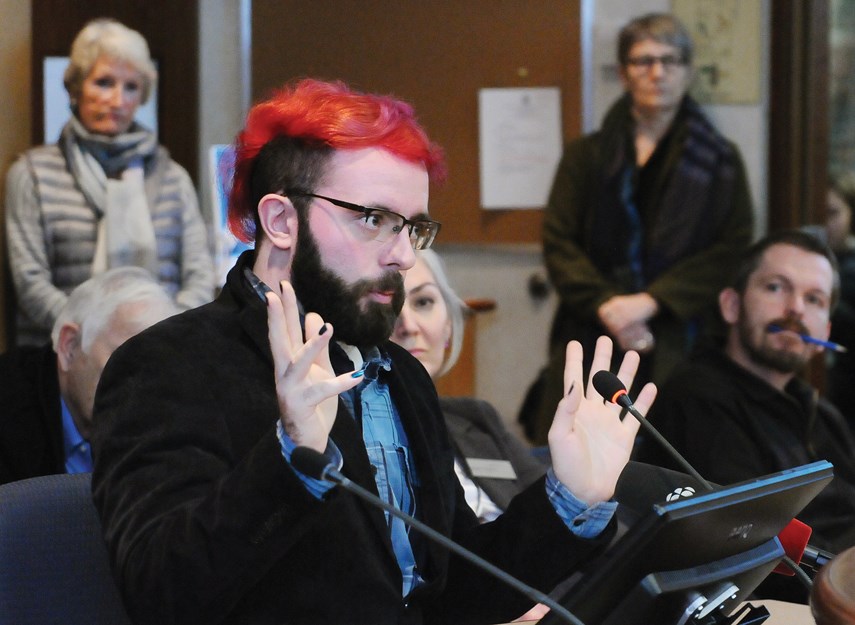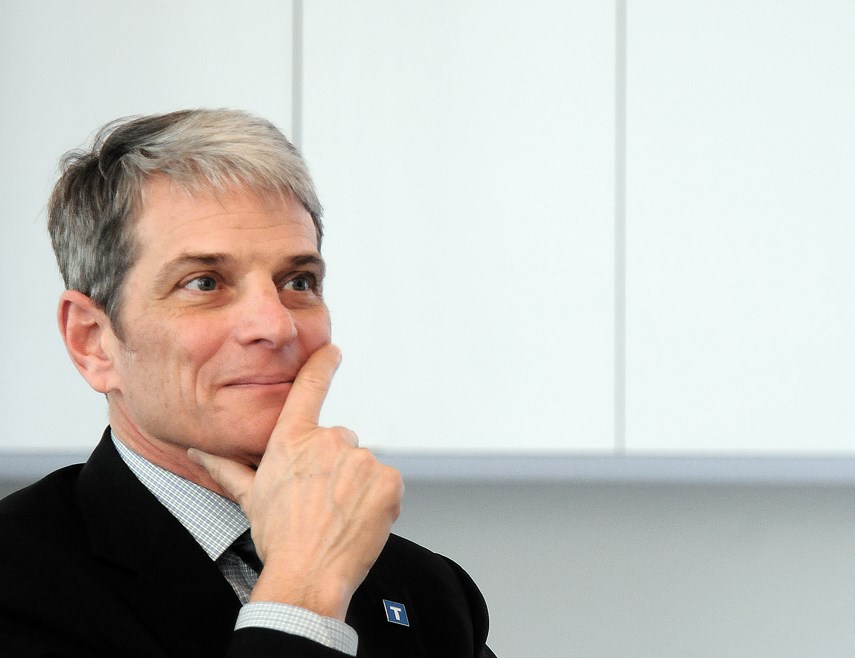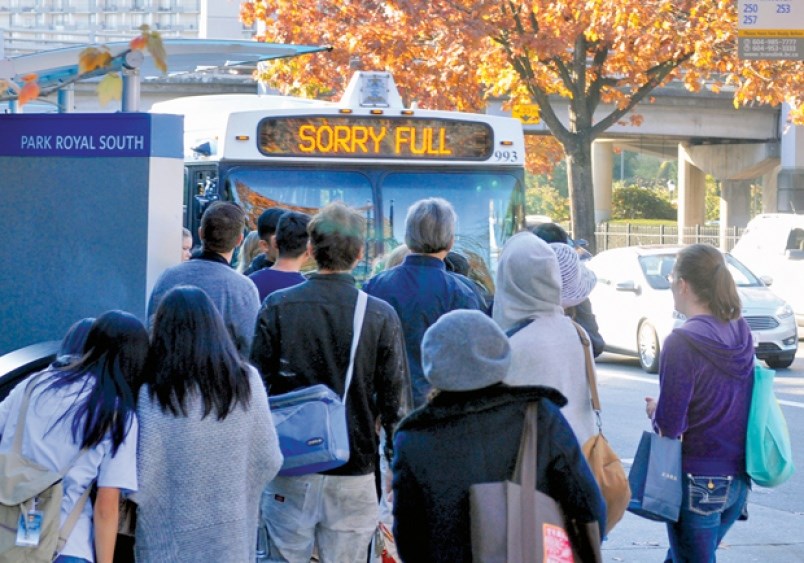There will be a North Shore B-Line, one way or another, says TransLink CEO Kevin Desmond. But it remains an open question whether West Vancouver will get on board.
The plan for an express bus spanning the North Shore from Dundarave to Phibbs Exchange has been in the works since 2014 and the service is expected to begin later this year. The B-Line would run every eight minutes during rush hour, and every 10 to 15 minutes during off-peak times, from 6 a.m. to 1 a.m., with stops in Dundarave, Ambleside and Park Royal before heading east through the District and City of North Vancouver.
But a recent revolt by Ambleside and Dundarave business owners and residents has West Vancouver council teetering on pulling out of the project. Desmond is now asking everyone to keep an open mind.
“What we want the folks in West Van to know, and across the North Shore, is TransLink is working in close partnership with all the communities here. We want to find ways to improve overall mobility for now and the future, particularly on the North Shore where everybody feels there’s a traffic problem,” Desmond said, in an interview Wednesday with the North Shore News. “Clearly we need to spend these weeks ahead with residents and business people in West Vancouver and walk through that question.”
Though it wasn’t a public hearing, District of West Vancouver council chambers overflowed Monday night with residents and business owners wanting to sound-off on the proposal. Those opposed outnumbered those in support by a margin of about two to one.
Whose lane is it anyway?
Most opposition stemmed from changes proposed for Marine Drive required to keep the bus moving. Under the plan, 15 street parking spots would be removed and the outside lanes in both directions would become “Business Access Transit” lanes, meaning they could only be used by buses, drivers who are parallel parking and drivers turning right off Marine.
The perception from many of the most vocal critics Monday, was that it would be taking away road space from one group, drivers, and handing it over to another one – bus riders.
Ambleside merchant David Jones said any measures that reduce private car access to the village centre could add up to a “fatal blow” for businesses in Ambleside.
“In the 50 years I’ve lived in West Vancouver, this B-Line proposal, with the lane closures, is the most delusional idea I’ve seen surface from this district office,” he said.
Peter McHugh warned council that the business access transit lanes would only send drivers looking for other east-west rat runs.
“There is no way in the world that any person of any common sense can close a lane and expect all these trucks and all the normal traffic to use one lane,” he said, adding that alternate routes are frequented by pedestrians and seniors. “If this lane is closed, (Bellevue) will be a freeway and other streets above will be too. Everybody is going to look for another way.”
But the already stop-and-go vehicle traffic on Marine Drive won’t necessarily be made worse with through traffic using just one lane, largely because of street improvements built into the plan, accoding to Dan Freeman, project manager for the B-Line.
“The way the Marine Drive corridor through that section works right now is actually not very efficient,” he said, thanks to drivers stopping to make left turns, people parallel parking or waiting for a pedestrian to clear the intersection. “As a result, you have two lanes, neither of which move a lot of the time.”
To keep drivers moving, left turns would be prohibited at 14th and 16th Streets, and new left turn bays would be added at 15th and 17th.
“You end up creating a lane that moves consistently. It doesn’t have anybody in your way,” Freeman said. “We ran all of the standard traffic simulation analyses that traffic engineers do and the result show it’s at worst, five seconds worse across five intersections, which is within the margin of error, or actually better in some circumstances.”
At Monday’s meeting, Peter Deutsch said he too was put off by having just one lane of through traffic for divers but after reviewing TransLink’s methodology, Deutsch said he no longer bought into the negative rhetoric surrounding the proposal.
“I don’t believe that TransLink is the bogeyman. They are not out for us. I believe they do have our best interests in mind,” he said.

Supply and demand
There is pent up demand for better service in West Vancouver, according to TransLink stats. The 250 bus is routinely standing-room only by the time it reaches 24th Street on an average weekday afternoon.
And transit ridership is climbing faster in West Van than most other municipalities, with 9.8 per cent growth in between 2017 and 2018, compared to 6.7 per cent overall across the region.
Implementing express buses was part of Desmond’s previous job as general manager of King County Metro Transit in Seattle, and Desmond said he has every reason to believe a West Van B-Line would be just as successful in getting people out of cars and onto buses, which is more efficient for the transportation system overall.
“We built six of those lines. We called them Rapid Ride – all of them very, very successful. All had very, very strong, immediate and sustained ridership growth in the region,” he said. “Study after study, empirical information after empirical information, will show that is the way you attract and retain more riders.”
According to TransLink stats, there are average of 8,000 people who board buses along Marine Drive in Ambleside and Dundarave on a typical weekday and another 11,000 at Park Royal.
At Monday’s meeting, however, there was a strong theme of comments from critics who simply do not believe the numbers TransLink has put forward.

On or off?
If West Van council says no or puts the terminus at Park Royal, as some have called for, the transit authority cannot force anything the municipality doesn’t want, Desmond said.
“What we are seeing in West Vancouver is obviously a challenge. Our goal for TransLink is to help any community figure out how to improve mobility. We’re not here to impose our will,” he said. “Some of the rhetoric depicts TransLink as a 900-pound gorilla.”
In council on Monday, Mayor Mary-Ann Booth noted West Vancouverites have long been calling for measures to improve congestion but she emphasized the final decision will be up to West Vancouver council after a four-to-six-week consultation process.
“Now we have a significant transit improvement proposal before us, which, if turned down, may not come along for another decade,” she said. “Council and the community need time to carefully consider this proposal before we make a decision.”
The public engagement plan includes a series of smaller stakeholder meetings, one large-scale community meeting, pop up displays and online outreach, though no dates have been scheduled, according to the district.
TransLink is expected to release details of the rest of the route from Park Royal to Phibbs Exchange next week.



